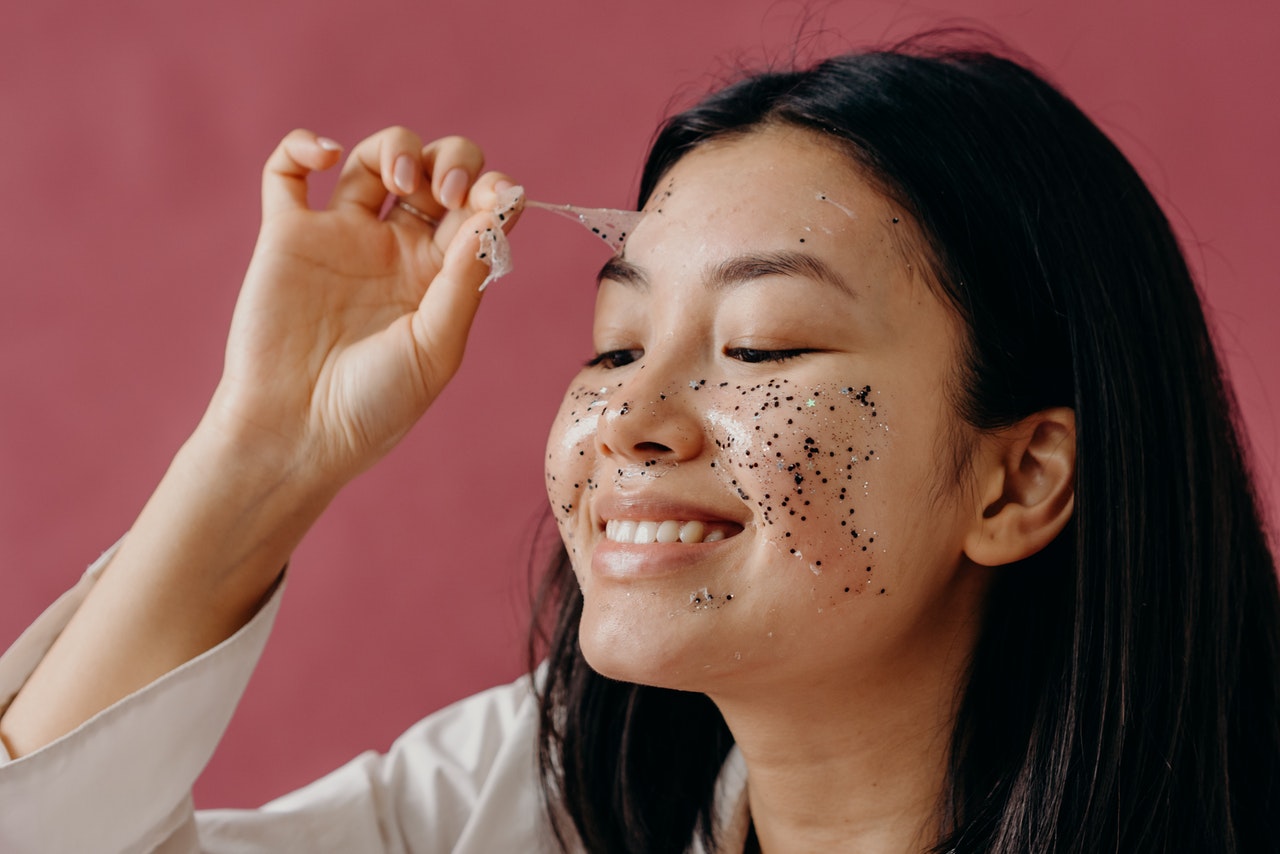
How can you exfoliate your face? that is the big question and in this post, I will be sharing how to exfoliate your skin, the benefits, types of exfoliates, and exfoliating products.
Table of Contents
WHAT IS EXFOLIATING?
Exfoliating is the process of removing the dead skin cells on the top layer of your skin.
This is a compulsory skincare routine if you want to help keep your skin smooth, soft, bright, and glowing.
You exfoliate your skin after going in with a cleanser.
Benefits of exfoliating
- When you exfoliate your skin it removes dead skin cells that clog up your skin which leads to blackheads and whiteheads.
- Exfoliating helps your skincare products(serums, essence, moisturizers, etc) penetrate better into your skin.
- When you exfoliate it helps improve hyperpigmentation and your skin texture because sometimes you may feel bumps on your skin.
How often should you exfoliate
How often should you exfoliate depends on your skin type and the type of exfoliation you are using.
Generally, I will recommend you exfoliate 2 times a week, but check what works for you, if your skin is too sensitive then do it once a week.
For oily skin, you can stretch it 3 times but check if your skin can tolerate it.
If you have any open wounds, irritated acne, or spots please avoid exfoliating until you are healed, you do not want to inflame or irritate your skin.
Types of exfoliation
There are 3 types of exfoliation:
- Physical Exfoliation
- Chemical Exfoliation
- Enzyme Exfoliation
Physical Exfoliation
These are exfoliators that feel a bit rough to touch, like beads, sugar, etc they have a granules texture to them.
They can also be peeling gel, peel-off masks, cotton pads, and spinning brushes.
types of physical exfoliators
1. FACE SCRUBS
Scrubs are the most frequently used type of exfoliators and they have ingredients such as oatmeal, rice powder, and sugar.
They work on the outer layer of the skin ( epidermis layer) and they are amazing for skin regeneration.
The particles help to remove dead skin cells physically and the acidic substance helps to remove the skin cells.
For sensitive skin try to use scrubs with smaller particles.
Dear Klairs Youthful Glow Sugar Mask
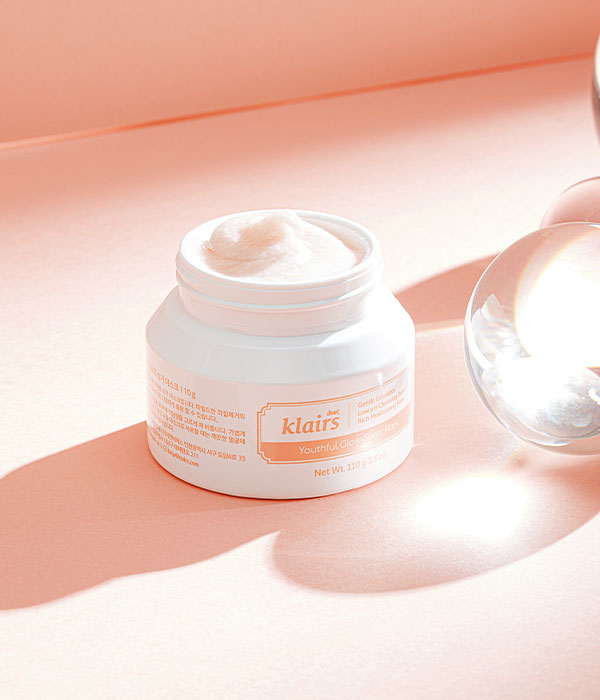
This sugar mask helps create a glowing complexion by mildly exfoliating dead skin cells and dry patches, as well as dissolving makeup and skin impurities without causing any tightness or dryness.
It has a 3 in 1 sugar action to exfoliate, cleanse & work as a face mask.
It contains grapefruit and raspberry extracts, kaolin, calamine, Vitamin C, and shea butter to moisturize, nourish, soften and brighten skin.
Key Ingredients
- Grapefruit extract and kaolin soften your skin texture without irritation.
- Shea butter, raspberry oil, and jojoba with rich nutrition leave your skin moisturized after washing off.
- Calamine to soothe your skin.
2. FACIAL PADS
This helps to exfoliate dead skin cells by wiping your face, they are soaked in liquid (chemical) exfoliants.
Aveeno Clear Complexion Daily Facial Cleansing Pads
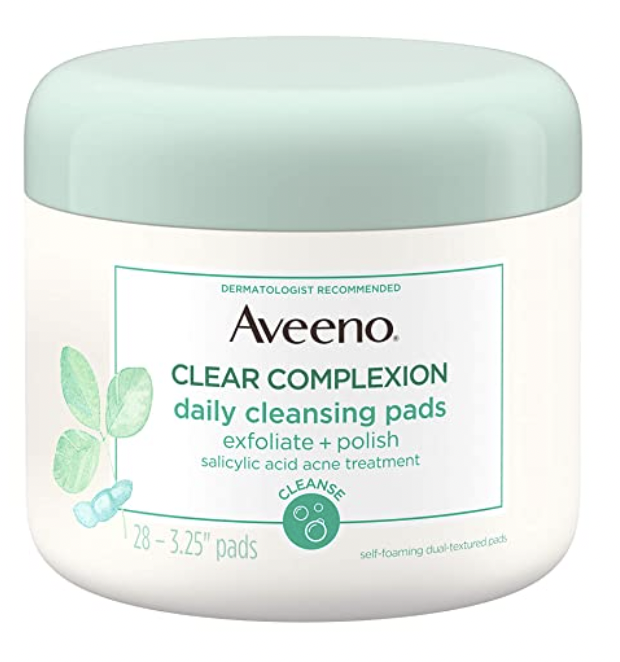
SHOP NOW: AMAZON
This facial pad helps clear up and prevent breakouts to leave your skin clear, smooth and even-looking
It is a pre-moistened facial cleansing pad that contains salicylic acid acne treatment to help fight acne and moisture-rich soy extract to improve skin’s clarity and help even out tone and texture.
3. FACE CLEANSING TOOLS
These face cleansing tools massage impurities away from the outer layer of your skin. You can pair it with any cleansing product you are already using to help you exfoliate.
Types of Face Cleansing Tool
- Bristle Brushes
Facial Cleansing Brush by Olay Regenerist

SHOP NOW: AMAZON
This exfoliating facial brush boosts the performance of your cleanser for a deep clean. It primes your skin to maximize the hydrating effect of your moisturizer.
- Exfoliating Gloves and Sponges
Buf-Puf Gentle Facial Sponge

SHOP NOW: AMAZON
This facial sponge gently cleanses away makeup, dirt, and excess oil, it lifts off dry, dulling skin cells.
It leaves your skin smooth and soft, perfectly prepped for moisturizers, makeup, and sunless tanning.
You can exfoliate with this sponge every day with your favorite soap or cleanser.
- Silicon Brushes
FOREO LUNA mini 2 Sonic Facial Cleansing Brush
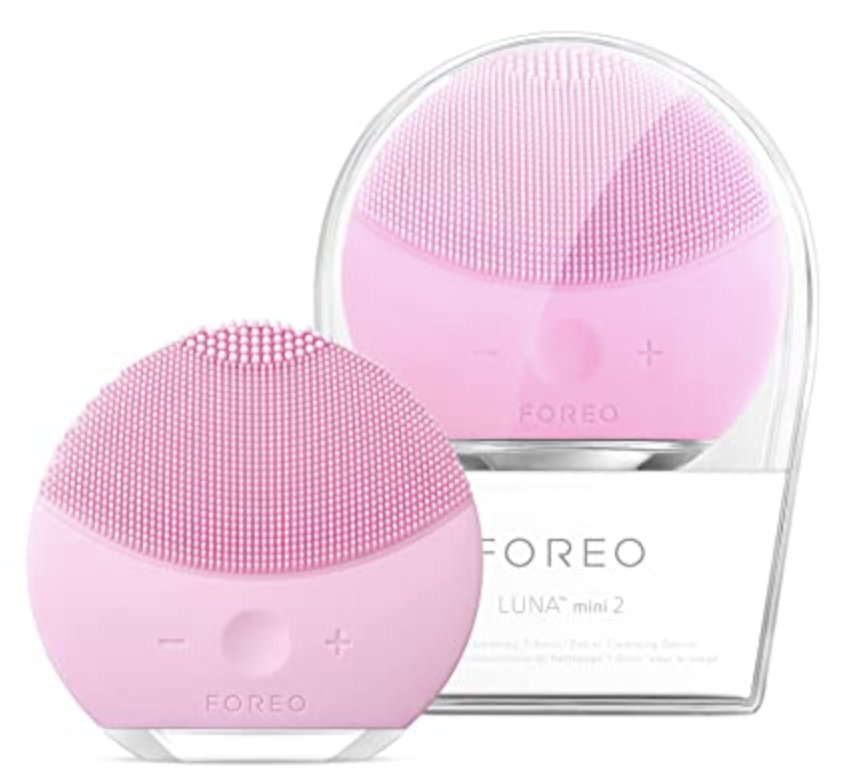
SHOP NOW: AMAZON
The LUNA mini 2 removes up to 99.5% of dirt and oil, dead skin cells, unclogs pores, and removes makeup residue.
chemical exfoliation
In chemical exfoliation, it is not about the physical texture of the exfoliant but the ingredient in the formula that has an exfoliating effect on your skin.
These can be treatments such as face peels and cleansers, toners, masks, and leave-on skincare products
types of chemical exfoliators
- Alpha Hydroxy Acids (AHAs)
- Poly Hydroxy Acids (PHAs)
- Beta Hydroxy Acids (BHAs)
- Lipo Hydroxy Acids ( LHAs)
1. Alpha Hydroxy Acids (AHAs)
Alpha Hydroxy Acids (AHAs) are chemical exfoliators that are water-soluble and work well on the other layer of the skin.
They contain Glycolic Acid, Citrus Acid, Malic Acid, and Lactic Acid.
They penetrate the skin deeply, have moisturizing properties and are very hydrating to the skin, and help with collagen regeneration.
However they can make your skin sensitive to UV rays, so whenever you use a product with AHAs, you have to wear sunscreen.
NEOSTRATA Glycolic Renewal Smoothing Cream
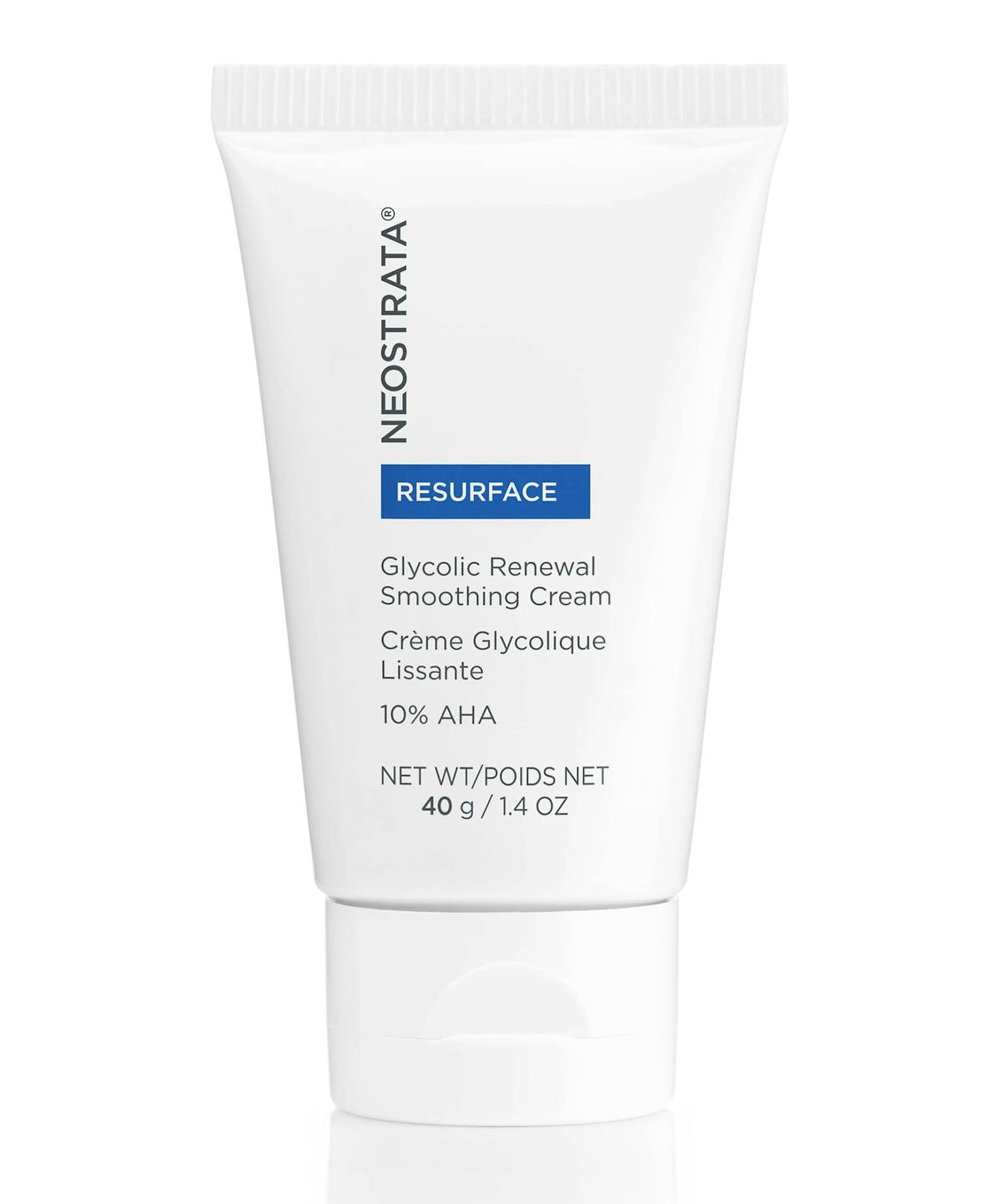
SHOP NOW: AMAZON
This smooth cream contains 10% glycolic and citric acids which help to remove dull, dead dermal cells, smoothing the appearance of fine lines and wrinkles.
It also helps to diminish the look of hyperpigmentation for a youthful, revitalized complexion.
Key Ingredients
- Glycolic Acid: dissolves dead skin cells, refining the appearance of pore size and smooths the look of fine lines and wrinkles as it re-texturizes skin.
- Citric Acid: helps protect the skin against the visible signs of oxidative stress and makes skin appear more youthful.
- Shea butter to condition and soften, enhancing texture and tone.
2. Poly Hydroxy Acids (PHAs)
Poly Hydroxy Acids (PHAs) are similar to AHAs but they have a larger molecule size, so it sinks into the skin slower.
Which makes it less irritating to the skin and also it does not make your skin sensitive to the UV rays.
The INKEY List PHA Toner
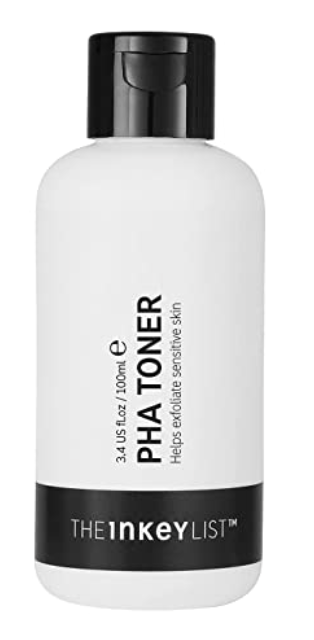
SHOP NOW: AMAZON
This is a gentle chemical exfoliant for sensitive skin, it removes dead cells from the surface layer of the skin, while naturally locking in moisture.
It contains 3% PHA and 3% Niacinamide helps to gently improve the texture of the skin.
Key Ingredients
- 3% PHA helps to improve skin texture
- 3% Niacinamide helps to reduce excess oil and improve uneven tone
- Aloe Barbadensis leaf juice soothes skin
3. Beta Hydroxy Acids (BHAs)
Beta Hydroxy Acids (BHAs) are oil-soluble, they will sink deep into your pores to cleanse and remove dead skin cells.
They have anti-inflammatory properties and they include Salicylic Acid.
Paula’s Choice Skin Perfecting 2% BHA Liquid Exfoliant
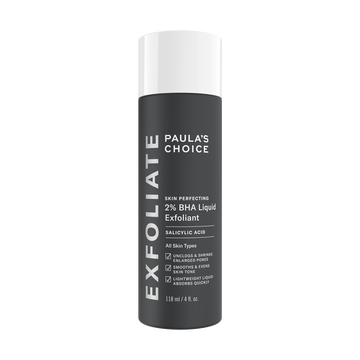
SHOP NOW: AMAZON
This gentle leave-on exfoliant quickly unclogs pores, smooths wrinkles, and brightens and evens out skin tone.
It combats redness, wrinkles, aging, enlarged pores, & blackheads.
Key Ingredients
- Salicylic acid: Clears & minimizes enlarged pores, sheds built-up layers of skin, and visibly reduces fine lines & wrinkles.
- Green tea: Soothes irritation, has potent anti-aging benefits, and visibly improves sun damage.
4. Lipo Hydroxy Acids ( LHAs)
Lipo Hydroxy Acids ( LHAs) are extracted from salicylic acid, it is also oil-soluble and sinks deeper into the skin.
They are less irritating because the chemical reaction hits slower.
Rovectin Clean LHA Blemish Ampoule

This ampoule has mild yet effective exfoliation of impurities and dead skin cells, 5 types of hyaluronic acid help to brighten and improve blemishes.
It contains 85% neroli flower water and sub-acidic LHA which works effectively on clogged pores with sebum and blackheads.
Key Ingredients
- Neroli Flower Water calms skin with its anti-inflammatory features, making it suitable for sensitive skin. It also stimulates skin cell growth and enhances skin elasticity.
- Glutathione is an effective antioxidant that keeps skin bright and clear and is a core ingredient in skin brightening
- 5 Types of Hyaluronic Acid to provide deep hydration and moisture retention.
enzyme exfoliation
This is still under chemical exfoliation, they are mainly extracted from fruits.
Enzyme exfoliation does not affect the natural skin cell turnover cycle but it naturally exfoliates your skin.
It cuts the link that holds the skin cells together and makes the dead skin fall out. However, it does not push out a new skin layer like other chemical exfoliants.
BY WISHTREND Green Tea & Enzyme Powder Wash

This cleanses oil and dust on the skin without dryness. It can also be used as a hydrating daily facial cleanser.
To use, lather up by adding a small amount of water to an appropriate amount of powder.
Key Ingredients
- Green Tea Powder is effective in cleansing and soothing and guarantees refreshing use.
- Papain Enzyme, Coconut-derived Surfactant, and Baking Soda gently melt away blackheads, impurities, and dead skin cells for brighter and smoother skin.
HOW TO EXFOLIATE YOUR SKIN BY SKIN TYPE
Depending on the type of skin type different types of exfoliation will work for you. For the most part, it is all about rubbing it into the.
Dry Skin
For people with dry skin using chemical exfoliants especially, AHAs will be very good for you because it is hydrating.
You can use physical exfoliants but don’t over scrub.
If you have dry and sensitive skin try using a low percentage of AHAs around 5% or use PHAs.
For dry skin, I will recommend you exfoliate 1-2 times weekly.
Acne-Prone Skin and Oily Skin
If you have acne-prone skin avoid physical exfoliation because with acne-prone skin you likely have inflammation, so you want to avoid ingredients that will cause more inflammation.
Use BHAs, it will get rid of the sebums and oils in your pores and also help your skin recover from acne scars.
If you have acne-prone sensitive skin try LHAs as it is more gentle.
For acne-prone skin, I will recommend you exfoliate once a week
Sensitive Skin
If you notice that most exfoliators irritate your skin then I will recommend enzyme exfoliating, because it does not peel off the epidermis.
For sensitive skin, I will recommend you exfoliate your skin 1-2 times weekly.
Aged Skin
If you want to maintain moisture loss I will recommend you use AHAs, but if it is too strong try BHAs.
For aged skin, I will recommend you exfoliate your skin 1-2 times weekly.
what to do after exfoliating
- After exfoliating, you should hydrate your skin, give it some love and moisture, and use ingredients like glycerin, soothing serums, and green tea moisturizers.
- Apply sunscreen
- Give your skin a break, on days you exfoliate try and avoid using active ingredients like AHAs and BHAs
WHEN TO STOP EXFOLIATING
Stop exfoliating if you notice your skin is red, inflamed, peeling, or irritated.
Looking for me skincare content?
21 Best Korean Toners Different Skin Types Will Love in 2022
11 Types of Facial Cleansers and How To Pick The Best
20 Best Sunscreens For All Skin Types They Will Love in 2022

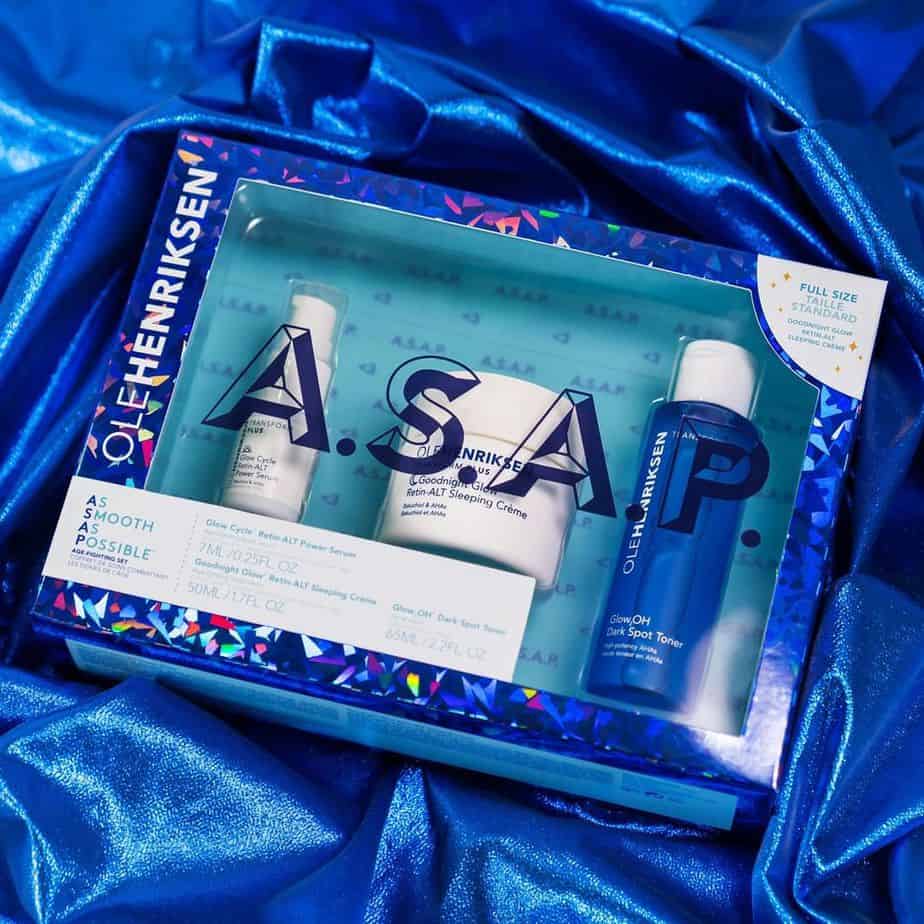

Leave a Reply